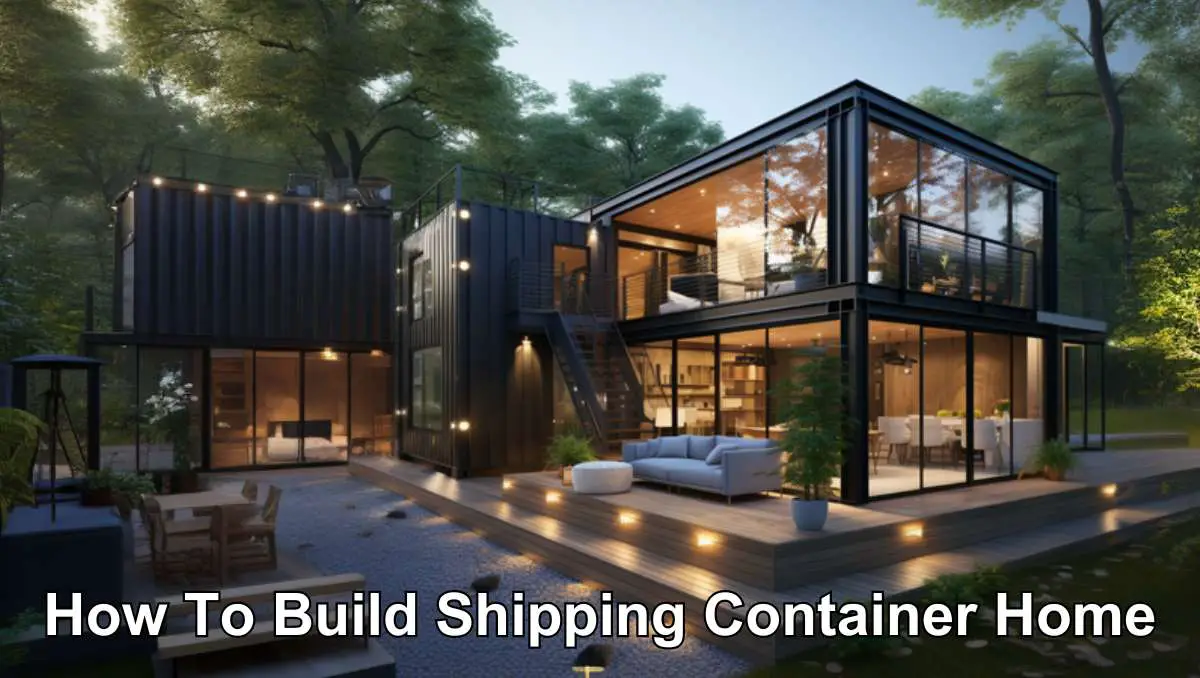Are you considering building a shipping container home but worried about the potential challenges and complexities? Don’t worry! Constructing a home using shipping containers may seem daunting at first, but it can be a rewarding project with the proper knowledge and approach.
To build a shipping container home, acquire first the necessary building permit and land. Then, purchase shipping containers and engage a contractor for professional installation. Finish the interior and exterior and transform the containers into a cozy home.
In this article, we will guide you through the step-by-step process of building your own shipping container home.
Vital Things To Know Before Building A Shipping Container Home
Before building a shipping container home, there are several key points you need to consider. Let’s go through each of them.
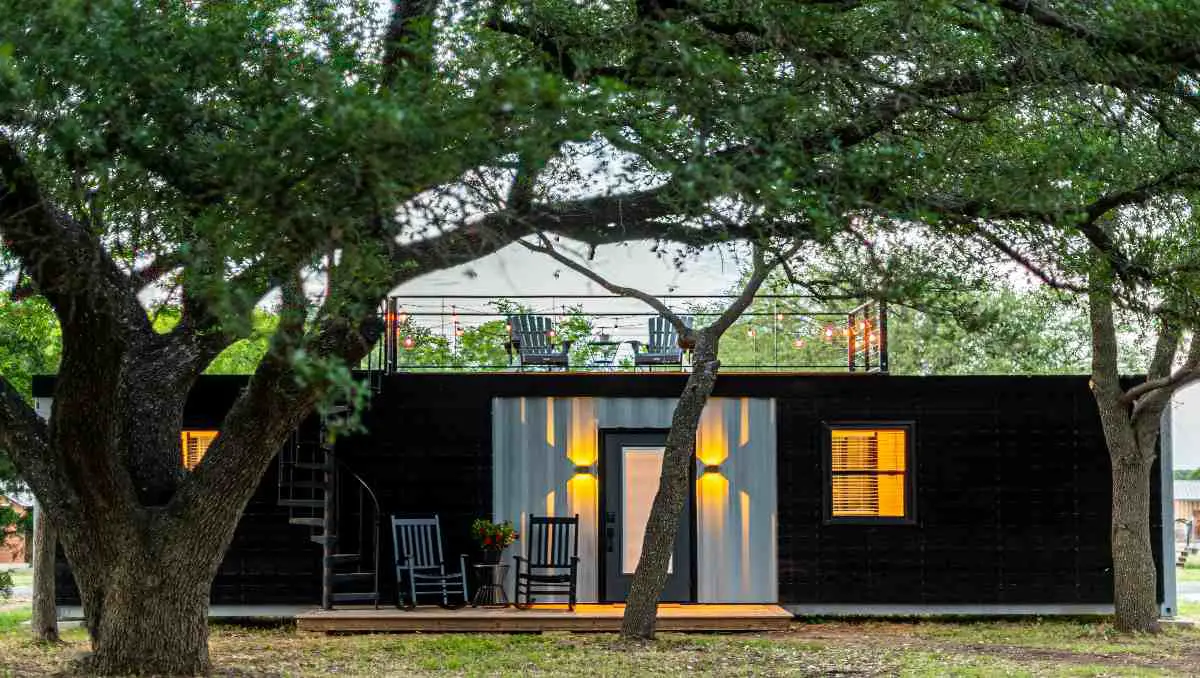
Local Building Codes and Zoning Regulations
While researching how to build a shipping container home, it’s essential to understand the local building codes and zoning regulations. These permits also ensure that your construction follows the required guidelines and meets safety standards.
Additionally, you must know land restrictions affecting where and how you can place your shipping container home. Familiarizing yourself with these regulations is crucial, as non-compliance can result in fines or legal action.
The Right Shipping Containers
When choosing shipping containers for your home, it’s essential to consider container sizes and structural integrity. Standard shipping containers come in 20-foot and 40-foot lengths. The price of large shipping containers is typically higher than the price of 20-foot containers. However, 40-ft containers offer more space and can be more cost-effective for large shipments.
Ensure that the selected containers are structurally sound with minimal rust or damage. To acquire suitable containers, reach out to reputable container suppliers who specialize in repurposed shipping containers.
Professional Help
Hiring a professional can significantly simplify transforming your shipping container into a dream living space. Professional assistance can ensure that you make informed decisions and avoid costly mistakes. Hiring experts in this field, such as consulting services or construction companies, can provide you with valuable insights and guidance throughout the project.
Moreover, they can offer project management services, ensuring that everything runs smoothly from start to finish. By engaging professionals, you can save time and effort while efficiently achieving your desired results.
Cost
Considering the budget is essential when embarking on a shipping container conversion project. It’s vital to be aware of the cost of container homes to ensure that your project stays within financial bounds. To ensure cost savings, here are four key factors to consider:
- Budgeting considerations: Develop a detailed budget plan that includes all necessary expenses, like permits, labor costs, insulation, plumbing, and electrical work.
- Construction timeline: Create a realistic timeline for the project to avoid unnecessary delays and additional costs.
- Material selection: Opt for affordable yet durable materials that meet your design requirements while staying within your budget.
- Financing options: Explore different financing options, like personal or construction loans, to fund your container home project without compromising your financial stability.
The 10-Step Guide to Building Your Shipping Container Home
This comprehensive 10-step guide is crafted to navigate you through the essential phases of building your dream shipping container home.
Step 1: Planning and Setting Your Budget

Are shipping container homes cheaper to build? This is a pivotal question to consider first as you embark on planning your project. Careful budgeting is essential to determine the scope of your shipping container home building venture.
Consider all the factors that can affect your budget, such as the size of the home, construction timeline, site selection, sustainable materials, and energy efficiency. Start by determining the size and layout of your shipping container home. This will give you a rough estimate of how many containers you’ll need and what modifications will be necessary.
Next, research costs associated with purchasing containers and hiring professionals for construction purposes. Remember to factor in additional expenses like permits, inspections, and utility connections.
Choosing sustainable materials not only helps reduce environmental impact but can also save on long-term maintenance costs. Look for eco-friendly options such as recycled insulation or solar panels.
Step 2: Procuring Necessary Permits and Land
This step is essential to ensure your project complies with legal requirements and environmental considerations.
The first aspect of this step is understanding the permit process. Depending on your location, specific permits may be required for building a shipping container home. Researching and familiarizing yourself with these regulations before proceeding further is essential.
Next, land selection becomes paramount. Consider factors such as accessibility, proximity to amenities, and zoning restrictions when choosing the right plot of land for your home.
After securing the appropriate permits and selecting suitable land, it’s time to address any legal requirements that may come into play during construction. This could include obtaining insurance coverage or meeting specific building codes.
Lastly, it’s crucial to establish a realistic construction timeline. Consider factors like weather conditions and the availability of contractors or builders.
Step 3: Selecting and Purchasing Shipping Containers
When creating your unique living space, the key is to choose and acquire the perfect shipping containers carefully.
Firstly, you need to decide on the type of container that suits your needs. The most common types include standard, high cube, and open-top containers. Each type has its dimensions and features that can impact the design and functionality of your home.
Next, consider the condition of the containers. Used containers are often more affordable but may require repairs or modifications. On the other hand, new containers offer a clean slate but come at a higher price point.
Finding reliable container suppliers is crucial in ensuring you get quality products at competitive prices. Research different suppliers and read reviews to make an informed decision.
Once you have selected your desired containers, arrange for their delivery to your construction site. Ensure you have appropriate equipment or services to unload them safely.
Consider the price of the shipping containers and any additional costs, such as transportation fees or customization expenses.
Step 4: Designing Your Container Home
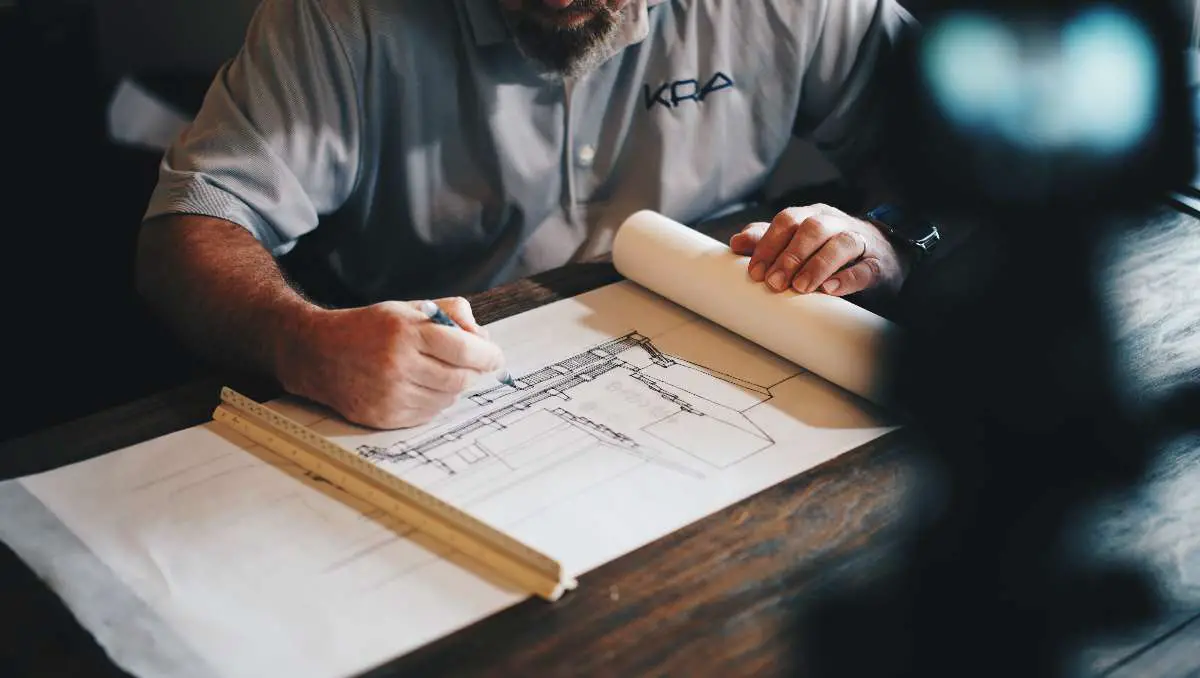
Once you’ve acquired the perfect shipping containers, it’s time to design a unique living space that will leave others in awe. Designing your container home involves several key considerations to ensure optimal space utilization and incorporate sustainable features.
Firstly, when considering the design of your container home, it’s essential to think about space optimization. With limited square footage available, every inch counts. Utilize multifunctional furniture pieces and consider built-in storage solutions to maximize the use of space.
Secondly, sustainability features should be incorporated into your design. Consider installing solar panels on the roof for renewable energy generation or implementing rainwater harvesting systems for water conservation. These eco-friendly additions benefit the environment and reduce utility costs in the long run.
Thirdly, carefully plan the interior layout of your container home. Determine how many rooms you need and their respective sizes. Consider open floor plans to create a sense of spaciousness within a confined area. Additionally, consider natural light sources and ventilation to enhance comfort and well-being.
Lastly, don’t forget about exterior aesthetics. Experiment with different colors, finishes, and cladding options to achieve a visually appealing look that suits your style.
Step 5: Preparing the Site and Foundation
Site preparation is crucial to ensure a stable and secure container home. The first step in site preparation is leveling the ground where your shipping containers will be placed. This involves removing any debris, rocks, or vegetation that may interfere with the placement of the containers. It is essential to have a level surface to avoid any structural issues later on.
After leveling the site, the next step is soil testing. This process helps determine the type of foundation required based on soil composition and stability. Soil testing also identifies potential issues, such as high water tables or soft spots, that could affect the stability of your container home.
Once soil testing is complete, it’s time to plan for proper drainage around your container home. This involves assessing natural slope patterns and designing an efficient system to divert rainwater from the foundation.
Foundation construction begins once all necessary preparations are made. Depending on soil conditions and local building codes, options for foundations include concrete piers or an entire concrete slab. Ensuring a solid and durable foundation is essential for your shipping container home’s long-term stability and safety.
Step 6: Modifying the Shipping Containers
This crucial step will involve implementing various techniques to ensure structural integrity and create a functional living space. In this phase, you need to plan out how you want the layout of your home to be. This includes deciding where windows, doors, and interior walls will be placed.
It’s essential to reinforce the containers by adding additional steel beams or columns to maintain structural integrity. This will help distribute the weight evenly and prevent any potential issues in the future.
Aesthetics and interior design also play a significant role in creating a comfortable living space. You can choose from various finishes for your container home’s exterior and interior, allowing you to personalize it according to your taste.
Step 7: Insulation and Weatherproofing
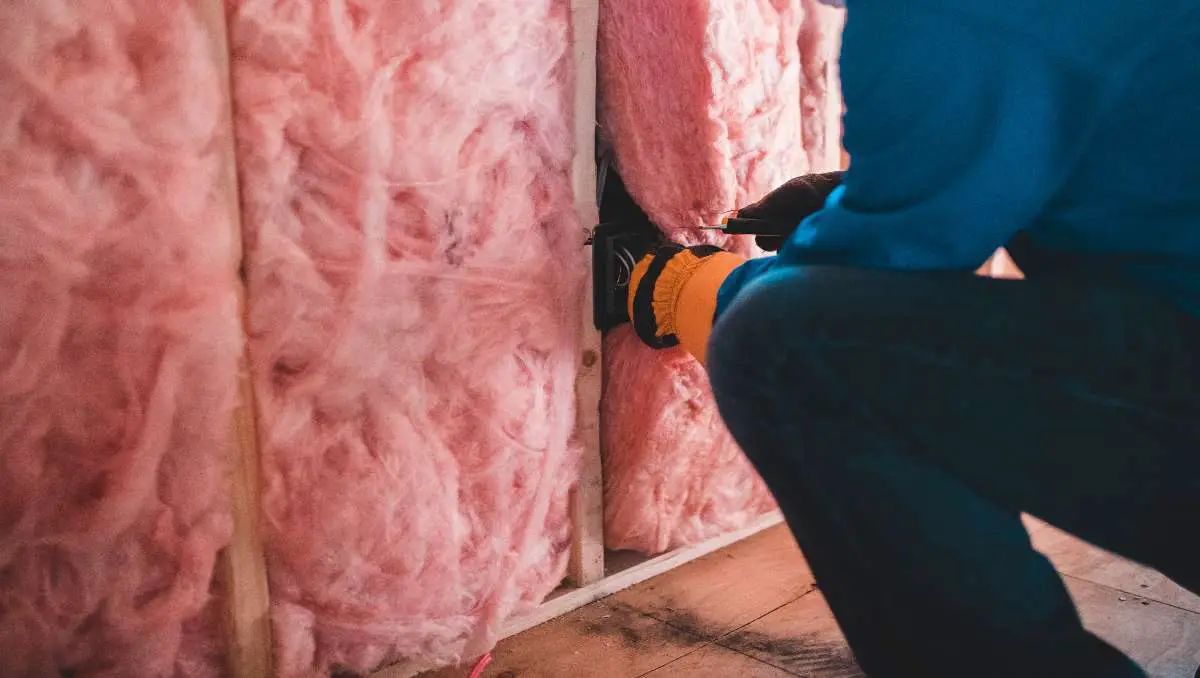
To truly transform your shipping container into a cozy and weather-resistant sanctuary, it’s crucial to focus on insulation and weatherproofing.
One popular insulation choice is spray foam, which creates an airtight seal and provides excellent thermal resistance. Another option is insulating panels, which can be attached to the container’s interior walls. These panels come in various materials such as expanded polystyrene (EPS) or polyisocyanurate (PIR), offering different levels of insulation.
To enhance energy efficiency further, consider installing double-glazed windows and doors. These not only provide better thermal performance but also minimize noise infiltration. Additionally, using reflective coatings on the roof can help reduce heat gain during hot summers.
Waterproofing techniques are essential to prevent water damage and moisture buildup inside the container home. Applying a waterproof membrane on the exterior walls can protect against rainwater penetration. Sealing any gaps or joints with high-quality caulking or silicone sealants is also essential.
Weatherproofing challenges may arise due to extreme temperatures, strong winds, or heavy rainfall. Therefore, selecting suitable insulation materials that can withstand these conditions is crucial for long-term durability.
Step 8: Electrical, Plumbing, and HVAC Systems
Creating a cozy and functional living space ensures your electrical, plumbing, and HVAC systems are expertly installed within the modified shipping container. Here are some important considerations when it comes to installing these essential systems:
1. Electrical Installation: Begin by planning the layout of your electrical system, including outlets, switches, and lighting fixtures. Ensure that the wiring is properly grounded and meets local building codes. Use energy-efficient LED lights to minimize power consumption.
2. Plumbing System: Install a reliable system with high-quality pipes and fixtures. Consider using PEX pipes for their durability and flexibility. Plan the placement of water supply lines, drains, and ventilation carefully to optimize space utilization.
3. HVAC Considerations: Choose a heating, ventilation, and air conditioning (HVAC) system that suits your climate needs. Mini-split systems can be excellent for efficient temperature control in compact spaces like shipping containers.
4. Wiring and Fixtures: Install appropriate wiring for all electrical appliances and equipment you plan to use in your home. Ensure to include safety features like circuit breakers or fuses to protect against electrical overloads.
Incorporate energy-efficient solutions into your electrical, plumbing, and HVAC systems wherever possible. This may include using smart thermostats or low-flow fixtures to conserve water usage.
Step 9: Interior and Exterior Finishing
With interior design, consider your style and how you want the space to feel. Start by choosing paint colors that reflect your taste and create the desired ambiance. From bold and vibrant hues to calming neutrals, the choice is yours.
Furniture selection plays a crucial role in maximizing functionality while maintaining aesthetic appeal. Opt for multi-purpose pieces such as folding tables, built-in storage units, and modular seating that adapt to different needs. This will help optimize the limited space available in a shipping container home.
Lighting options shouldn’t be overlooked, as they can significantly enhance your home’s functionality and atmosphere. Consider installing recessed lighting fixtures or track lighting systems to provide ample illumination throughout the space. Additionally, add natural light by adding windows or skylights to brighten the interior.
Moving on to exterior landscaping, consider integrating greenery and creating an inviting outdoor area around your shipping container home. Use potted plants, vertical gardens, or even rooftop gardens if feasible.
Step 10: Incorporating Additional Features (Optional)
There are several ways to do this while promoting sustainability and maximizing functionality.
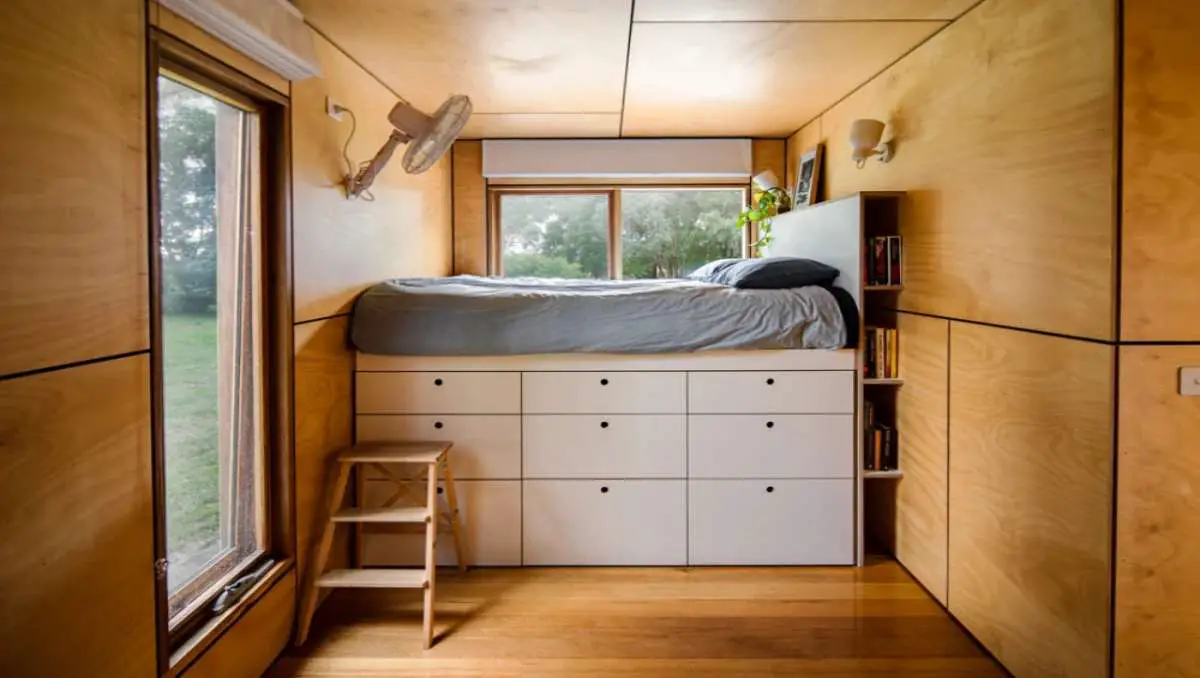
Sustainability Features
One option is to install solar panels on the roof of your shipping container home. This will help reduce your carbon footprint and save you money on energy bills in the long run. Additionally, you can implement rainwater harvesting systems to collect and store rainwater for non-potable uses such as watering plants or flushing toilets.
Creative Storage Solutions
Since space might be limited in a shipping container home, it’s crucial to think about storage. Consider installing built-in shelves and cabinets that maximize vertical space. Utilize under-bed storage or incorporate multifunctional furniture with hidden compartments for added convenience.
Furnitures
Opt for compact and versatile pieces that serve multiple purposes. Look for modular sofas that can be rearranged into different configurations or folding tables that are easily stored away when not in use. This will help optimize the available space and make your living area more functional.
Remember outdoor living spaces as well – consider adding a rooftop deck or patio area where you can enjoy fresh air and outdoor activities. Ensure ample natural light flows into your home by strategically placing windows, skylights, or even glass doors throughout the space.
Mistakes to Avoid When Constructing Shipping Container Homes
Be cautious not to let your dreams of a cozy haven turn into a nightmare by avoiding these common pitfalls when constructing your unique living space.
- Don’t underestimate the importance of proper insulation. Shipping containers are steel, so they conduct heat and cold efficiently. Ensure you use high-quality insulation materials and consult with professionals if needed.
- Make sure to consider structural modifications. Cutting openings for windows and doors weakens the container’s structure, so it’s important to reinforce it properly. Neglecting this step may lead to safety hazards or even collapse in extreme cases.
- Shipping containers have limited airflow, which can cause moisture buildup and mold growth if not addressed correctly. To make shipping container homes safe to live, it’s advisable to install vents or fans strategically throughout your home to promote air circulation and prevent these issues.
- Make sure you obtain all necessary permits before starting construction. Ignoring this step could result in legal complications down the line.
Your Path Forward: Bringing Your Container Home to Life
In conclusion, building a shipping container home requires careful planning and attention to detail. By following the steps outlined in this article, you can successfully create a unique and cost-effective living space.
Interestingly, according to a recent survey conducted by the Container Home Alliance, the average cost of building a shipping container home is $150,000, significantly lower than traditional housing options.
So, if you’re looking for an innovative and affordable housing solution, consider exploring shipping container homes.

